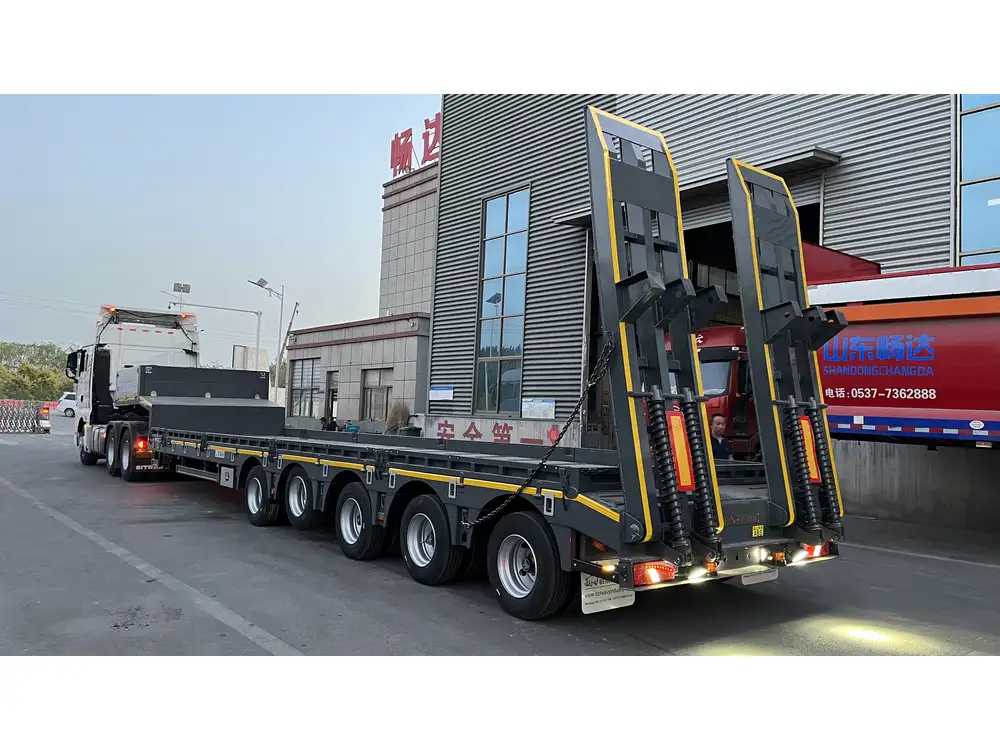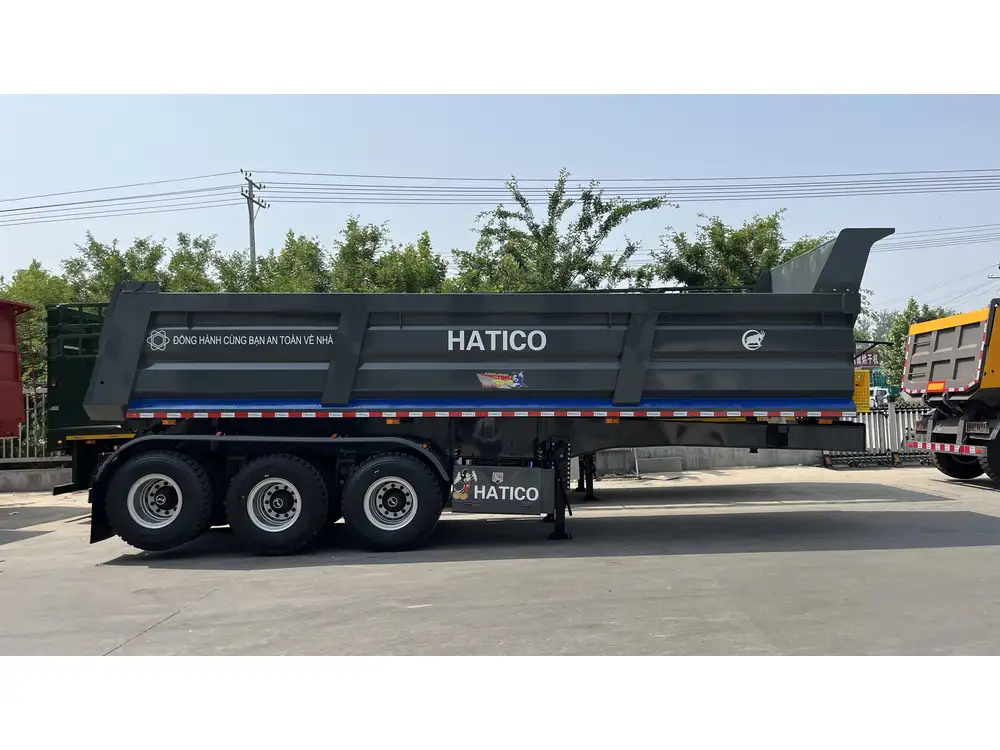Measuring the length of a semi-trailer is a fundamental task that often poses various challenges for operators, owners, and manufacturers alike. Accurately determining length is crucial for a variety of reasons, including compliance with transportation regulations, assessing fit for specific loading docks, and analyzing overall operational capabilities. In this guide, we will explore the best practices for measuring semi-trailer length, common pitfalls to avoid, and the significance of precise measurements in different scenarios.
Table of Contents
- Understanding Semi-Trailer Dimensions
- 1.1 Basic Components of a Semi-Trailer
- 1.2 Types of Semi-Trailers
- Pre-Measurement Considerations
- 2.1 Necessary Tools
- 2.2 Safety Precautions
- Steps to Measure Semi-Trailer Length
- 3.1 Measuring the Overall Length
- 3.2 Measuring the Interior Length
- 3.3 Measuring from Coupling Point to Rear
- Common Mistakes to Avoid
- Why Accurate Measurements Matter
- 5.1 Regulatory Compliance
- 5.2 Loading and Unloading Efficiency
- 5.3 Maintenance Planning
- Conclusion
- FAQs About Semi-Trailer Measurements
1. Understanding Semi-Trailer Dimensions

1.1 Basic Components of a Semi-Trailer
Before diving into the measurement process, it’s essential to grasp the basic components of a semi-trailer. A semi-trailer is an articulated vehicle used primarily for transporting goods, consisting of:
- Front Section (Kingpin): The connection point to the tractor unit.
- Rear Section (Trailer Body): The main body where cargo is stored.
- Axles: Located towards the rear, affecting both stability and weight distribution.
Understanding these components will help when assessing total length and specific attributes.
1.2 Types of Semi-Trailers
Various types of semi-trailers include:
- Flatbed Trailers: Used for transporting heavy equipment and machinery.
- Enclosed Trailers: Ideal for freight that requires protection from elements.
- Reefer Trailers: Designed for temperature-sensitive cargo.
Each type may have unique measurement guidelines based on structural variations.
2. Pre-Measurement Considerations

2.1 Necessary Tools
To achieve accurate results, you will need:
- Measuring Tape: A durable, flexible tape preferably over 25 feet long.
- Level: To ensure even measurement on uneven terrain.
- Chalk or Marker: For marking measurement points.
- Notebook: To record your findings effectively.
2.2 Safety Precautions
Safety is paramount. Ensure that:
- The trailer is parked on a flat, stable surface.
- You are wearing appropriate clothing and safety gear.
- There are no obstructions around the trailer that could pose a risk.
3. Steps to Measure Semi-Trailer Length
Understanding how to measure the semi-trailer length can save time and reduce errors. Here is a step-by-step process:

3.1 Measuring the Overall Length
Positioning: Start by positioning the measuring tape at the extreme front edge of the semi-trailer (where it meets the kingpin).
Extend the Tape: Extend the measuring tape towards the furthest point on the rear end of the trailer. This may include additional extensions, like ramp or hitch.
Record the Measurement: Ensure the tape remains straight and avoid any curves. Record the overall length in your notebook.
3.2 Measuring the Interior Length
Remove Any Obstacles: Ensure the interior of the trailer is clear of cargo or obstructions.
Start from the Front Bulkhead: Place the measuring tape against the bulkhead in the front of the trailer.
Measure to the Rear Doors: Bring the measuring tape to the rear doors while keeping it level and straight. Record this measurement for relevance in cargo capacity.
3.3 Measuring from Coupling Point to Rear
Locate the Coupling Point: Identify the exact location where the kingpin connects to the tractor.
Measure to Rear: Extend the measuring tape from this coupling point directly to the back edge of the trailer. This length is particularly essential for understanding maneuverability.

4. Common Mistakes to Avoid
Not Accounting for Hitches: Failing to measure the hitch as part of the overall length can lead to inaccuracies.
Curved Tape Measurements: Ensure the tape remains straight and not bent during measurement.
Ignoring Load Weights: Heavy loads can shift the trailer, impacting actual measurements.
These common pitfalls can dramatically affect the reported lengths, leading to compliance issues or logistical complications.
5. Why Accurate Measurements Matter
5.1 Regulatory Compliance
In transportation, adhering to local and national regulations regarding trailer lengths is critical. Authorities often impose strict guidelines, and exceeding permissible lengths can incur hefty fines. Accurate measurement safeguards against legal complications.

5.2 Loading and Unloading Efficiency
An accurately measured semi-trailer assists in optimizing loading and unloading operations. Understanding your length helps in loading docks select the right vehicles for their infrastructure, ultimately improving turnaround times.
5.3 Maintenance Planning
Knowing the specific dimensions is not only vital for operational effectiveness but can also inform maintenance schedules. For instance, parts may need to be tailored or located differently depending on the trailer’s specifications.
6. Conclusion
Accurate measurement of semi-trailer length is more than a mere numerical value; it is a cornerstone for operational efficiency, compliance, and logistical success. By understanding the components, preparing adequately, and executing precise measurements, owners and operators can secure their investments while enhancing overall performance.

7. FAQs About Semi-Trailer Measurements
Q1: What is the standard length of a semi-trailer?
A: In the United States, the typical length of a semi-trailer is up to 53 feet for most standard model types.
Q2: How does the length affect the trailer’s capacity?
A: Longer trailers often have increased load capacity, but this must be balanced against local regulations to avoid fines.
Q3: Can I modify my trailer to increase its length?
A: Modifications can be made, but you must ensure compliance with local laws and regulations regarding trailer dimensions.
Q4: How can I accurately measure a loaded trailer?
A: Measure the trailer’s dimensions while empty, then assess potential load changes. Generally, it is recommended to measure when the trailer is unloaded for consistency.
Q5: Where can I find more information about trailer specifications?
A: Most manufacturers provide detailed specifications on their websites, including dimensions and compatibility features.
This comprehensive guide serves as a valuable resource for understanding how to measure semi-trailer lengths accurately. By maintaining an awareness of best practices and common considerations, you can enhance operational capabilities and ensure regulatory compliance.



